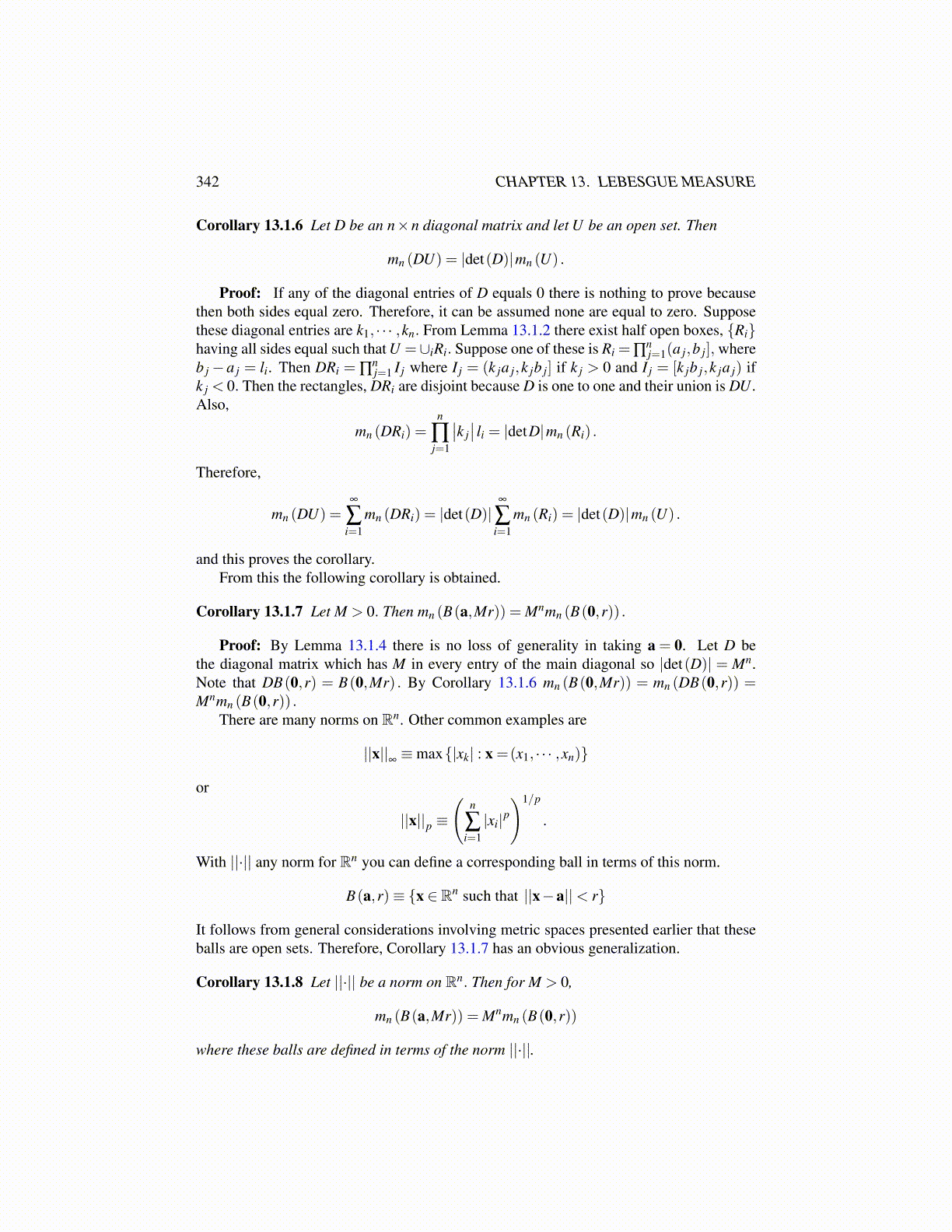
342 CHAPTER 13. LEBESGUE MEASURE
Corollary 13.1.6 Let D be an n×n diagonal matrix and let U be an open set. Then
mn (DU) = |det(D)|mn (U) .
Proof: If any of the diagonal entries of D equals 0 there is nothing to prove becausethen both sides equal zero. Therefore, it can be assumed none are equal to zero. Supposethese diagonal entries are k1, · · · ,kn. From Lemma 13.1.2 there exist half open boxes, {Ri}having all sides equal such that U =∪iRi. Suppose one of these is Ri = ∏
nj=1(a j,b j], where
b j− a j = li. Then DRi = ∏nj=1 I j where I j = (k ja j,k jb j] if k j > 0 and I j = [k jb j,k ja j) if
k j < 0. Then the rectangles, DRi are disjoint because D is one to one and their union is DU.Also,
mn (DRi) =n
∏j=1
∣∣k j∣∣ li = |detD|mn (Ri) .
Therefore,
mn (DU) =∞
∑i=1
mn (DRi) = |det(D)|∞
∑i=1
mn (Ri) = |det(D)|mn (U) .
and this proves the corollary.From this the following corollary is obtained.
Corollary 13.1.7 Let M > 0. Then mn (B(a,Mr)) = Mnmn (B(0,r)) .
Proof: By Lemma 13.1.4 there is no loss of generality in taking a = 0. Let D bethe diagonal matrix which has M in every entry of the main diagonal so |det(D)| = Mn.Note that DB(0,r) = B(0,Mr) . By Corollary 13.1.6 mn (B(0,Mr)) = mn (DB(0,r)) =Mnmn (B(0,r)) .
There are many norms on Rn. Other common examples are
||x||∞≡max{|xk| : x =(x1, · · · ,xn)}
or
||x||p ≡
(n
∑i=1|xi|p
)1/p
.
With ||·|| any norm for Rn you can define a corresponding ball in terms of this norm.
B(a,r)≡ {x ∈ Rn such that ||x−a||< r}
It follows from general considerations involving metric spaces presented earlier that theseballs are open sets. Therefore, Corollary 13.1.7 has an obvious generalization.
Corollary 13.1.8 Let ||·|| be a norm on Rn. Then for M > 0,
mn (B(a,Mr)) = Mnmn (B(0,r))
where these balls are defined in terms of the norm ||·||.